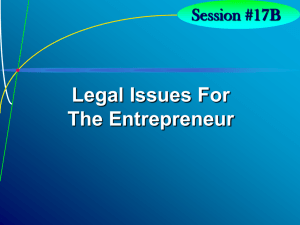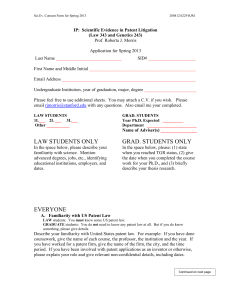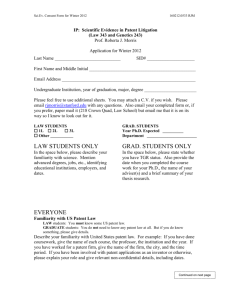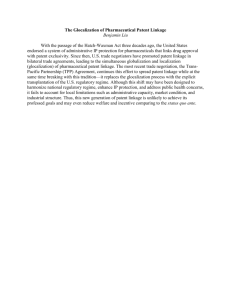FE450: Game Theory
advertisement
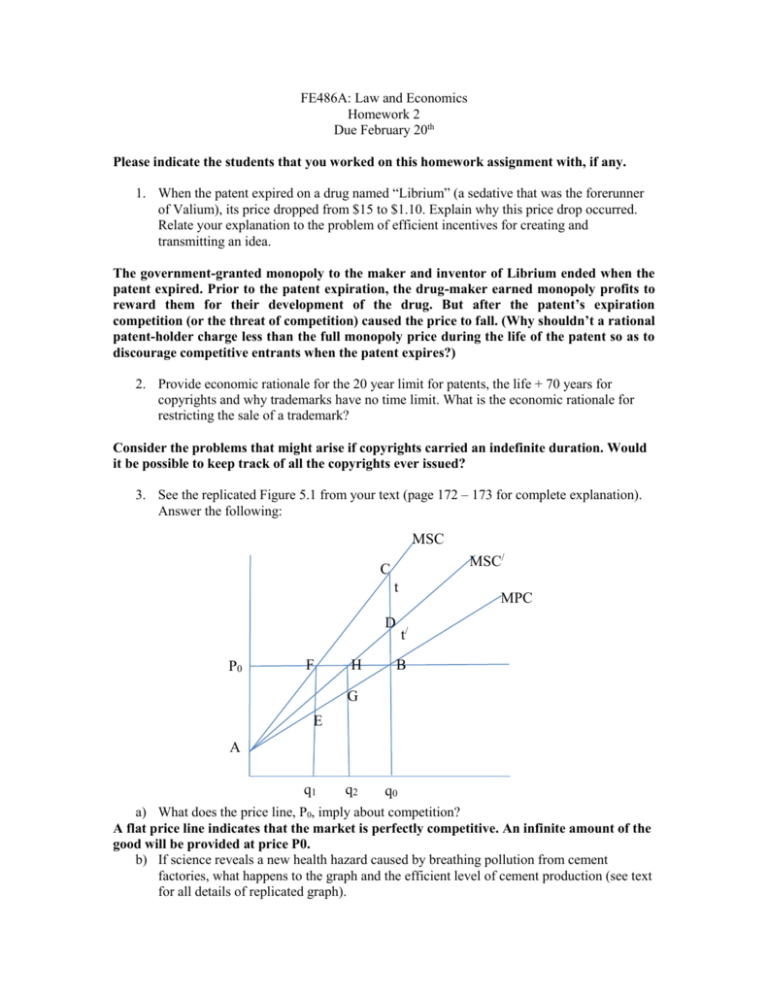
FE486A: Law and Economics Homework 2 Due February 20th Please indicate the students that you worked on this homework assignment with, if any. 1. When the patent expired on a drug named “Librium” (a sedative that was the forerunner of Valium), its price dropped from $15 to $1.10. Explain why this price drop occurred. Relate your explanation to the problem of efficient incentives for creating and transmitting an idea. The government-granted monopoly to the maker and inventor of Librium ended when the patent expired. Prior to the patent expiration, the drug-maker earned monopoly profits to reward them for their development of the drug. But after the patent’s expiration competition (or the threat of competition) caused the price to fall. (Why shouldn’t a rational patent-holder charge less than the full monopoly price during the life of the patent so as to discourage competitive entrants when the patent expires?) 2. Provide economic rationale for the 20 year limit for patents, the life + 70 years for copyrights and why trademarks have no time limit. What is the economic rationale for restricting the sale of a trademark? Consider the problems that might arise if copyrights carried an indefinite duration. Would it be possible to keep track of all the copyrights ever issued? 3. See the replicated Figure 5.1 from your text (page 172 – 173 for complete explanation). Answer the following: MSC MSC/ C t D P0 F H MPC t/ B G E A q1 q2 q0 a) What does the price line, P0, imply about competition? A flat price line indicates that the market is perfectly competitive. An infinite amount of the good will be provided at price P0. b) If science reveals a new health hazard caused by breathing pollution from cement factories, what happens to the graph and the efficient level of cement production (see text for all details of replicated graph). A new health hazard would raise the marginal social cost of cement production and decrease the efficient level of production. Presumably this means that a new or a greater injury is being inflicted on the neighbors. If the company has purchased – through permanent damages – the “right to pollute,” the neighbors could claim that the deal needs to be renegotiated: the harm is greater than the earlier deal imagined. 4. Chapter 4 concluded with “…property rights are part of the law that makes owners internalize the social costs and benefits of alternative uses of the goods that they own.” Torts are also an essential part of the law. Explain why. Regulations typically correct for market failures, while efficient default rules reduce the transaction costs of bargaining. How do the concepts of “transaction cost reduction” and “market failure” apply to tort law? Bargaining is not really possible between the vast majority of people who will meet in an accident. So, the transaction costs that are to be reduced certainly are not those that are involved in pre-accident bargaining. The market failure in most accidents is an externality. By taking precaution someone can confer a benefit on another – an external benefit – by making accidental injury less likely and less severe. 5. Suppose that a person who is burned in an accident suffers intense pain for 1 week and then fully recovers. What does “perfect compensation” mean in principle as applied to the burn? Why do you expect actual compensation to be imperfect? The court would need to decide what amount of money would perfectly compensate the burn victim for her one week of pain. This is extremely difficult to calculate, thus illustrating the problem. Do you have any idea how much money you would accept in exchange for suffering one week of intense pain? We doubt it.
